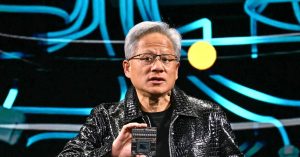Dr. Pravir Malik is the founder and chief technologist of QIQuantum and the Forbes Technology Council group leader for Quantum Computing.
The promise of quantum technology and computing lies in its ability to parse the unknown potential of the invisible into visible and practical technology. The quantum level, after all, is that which separates the invisible from the visible. This implies that no matter what we currently know or what technology we develop, there will always be more to discover and innovate.
For this to happen, researchers, technologists, quantum computing scientists and potential users of quantum-based services, among others, need to elevate their level of creativity. Given the ongoing challenges in quantum computation—with no short-term resolutions in sight—we may need to rethink our approach, moving away from pursuing complexity in the wrong direction and instead embracing simplicity in the right one. As users, we need to be able to increase discrimination and judgment, creatively building portfolios of solutions to both manage risk and focus on the right processes and strategies to realize meaningful impact.
This article outlines some approaches successfully used in various organizations to push the boundaries of creativity. None of these are quick fixes; they require work at the individual, team and organizational levels to create meaningful results. Think of organizational processes, strategies and policies as being summarized by a set of equations. Incorporating these approaches can be seen as changing key parameters in these equations, effectively morphing the organizational mathematics.
Leveraging EQ And MQ
We all possess two sophisticated internal systems: emotional intelligence (EQ) and something that I will refer to as “mental-model intelligence” (MQ). The sophistication of these systems depends on how well we use and integrate them into our daily functioning.
EQ is like a radar that makes us aware of what’s happening in an organization through signals that arise within ourselves. These signals might come from the mind, heart, gut or simply through sensations. By paying close attention to these signals, we can better manage what the “system” tells us. For example, sensing how someone else feels or getting an intuition about something amiss in the organization can help us address issues more effectively.
MQ involves reflecting deeply, often using EQ as a starting point. Emotions are usually just the tip of the iceberg; the subjective information about why an emotion arose is more important. Emotions help surface deeper-seated mental models—perceptions, assumptions, thoughts—about how and why the world works the way it does from the point of view of individuals, teams or organizations. Insight into these mental models is invaluable as it allows us to understand and influence the organization more effectively.
By actively working with EQ and MQ, often spurious imaginings are replaced by better grounded perceptions. This dynamic is perhaps best captured by Carl Jung in his words, “Who looks outside dreams; who looks inside awakes.” This changes the organizational mathematics by reducing noise and focusing on underlying variables that can in turn lead to unexpected and transformative changes.
PowersWithin
PowersWithin is an approach to help individuals and teams uncover deeper drivers important for their individuality and purpose. Positioned as an experiment in changing neuroplasticity, the approach is anchored around the use of unconventional language to create new neural networks in the brain, enabling people to see the same things differently. This enhances creativity and allows people and teams to access their unique qualities more freely. Consequently, the organization as a whole gains more power as diverse perspectives and approaches emerge to meet changing circumstances.
PowersWithin can profile different departments to surface important questions like:
• What are the primary drivers that animate them?
• What is the ideal profile in terms of underlying drivers for a department facing current challenges?
• What is the gap between the current and ideal profiles?
• How might this gap be closed?
This approach often uncovers cases of imbalance, highlighting the additional ways of thinking and doing or the additional personalities needed to make a focused difference.
Light
The use of light is a powerful yet underutilized approach to change organizational mathematics. Summarized in a two-part Forbes series, the approach involves using light scientifically in similar situations and observing the differences. Light exercises often help individuals enter a deeper space and feel more in control. Applying light in complex situations can facilitate change where logically conceived initiatives may fail.
Conclusion
Applying EQ, MQ, PowersWithin and light effectively changes the mathematics of an organization. The idea is to facilitate the evolution and progress of quantum initiatives by understanding and influencing the underlying “mathematics” of the organization. Different mathematical dynamics are activated based on changing conditions, allowing the organization to open to new possibilities and morph in a less constrained manner.
As quantum technology and computing continue to unveil the hidden and unending invisible in a continuous stream, it is imperative to increase our discrimination and judgment, creatively building simplicity in the right direction. Hanging the mathematics of an organization through such approaches will be critical in ushering in a productive Quantum Age.
Forbes Technology Council is an invitation-only community for world-class CIOs, CTOs and technology executives. Do I qualify?
Read the full article here









